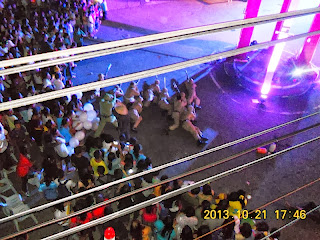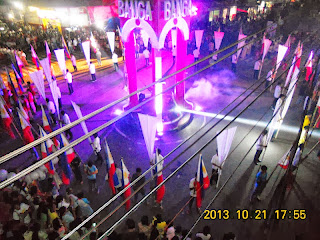Historical Reenactment of the Banga Crossing Massacre
October 21, 2013
Organized by the Banga LGU in cooperation with DepEd
Banga, Aklan
By order of the Mayor − Lorenzo Duran, Jr. − the Banga townsfolk prepared to welcome the Japanese Imperial Army arriving
from Iloilo in the morning of October 21, 1942. They organized themselves into
two groups – the first group
headed to Libas, while the second group stayed at the Banga Crossing. Everybody
was excited. They brought food. They were singing and drinking tuba. There was
dancing, too.
One survivor, 79-year
old Edgar Rigodon-Orola,
who was aged eight at the time, was at Banga Crossing on that day with his
father. He is present in today’s reenactment. He speaks about how the Japanese forces
killed the first group who went to Libas, how they rounded up the second group at the Crossing, ordered
them to squat, fired upon them, kicked and stabbed some with bayonets. He also recalls
how he was saved by his father who covered him, how he was kicked and stabbed,
how he pretended to be dead, how he observed what happened next with his eyes half
open, and how he was finally saved and lived to this day.Click on each photo to view a larger size.





















